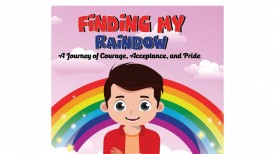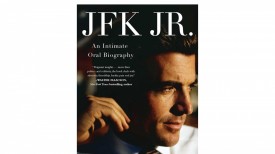HarperCollins's Book Design Change Yields Major Environmental Impact
A seemingly minor alteration in book design by HarperCollins, a prominent global publishing house, has yielded a noteworthy environmental impact. The company has successfully preserved thousands of trees through subtle adjustments to fonts, layouts, and ink utilization.
Sustainable Design Initiative
The initiative, led by Leah Carlson-Stanisic, the associate director of design, focuses on optimizing each page's elements to enhance readability while reducing paper consumption. Historical fiction may call for vintage-inspired fonts, while modern technology books demand sleek sans-serif styles. This careful selection process, driven by intuition and experience, ensures that the essence of each book is captured in its design.
HarperCollins is committed to sustainability beyond looks. In the last three years, its designers have worked on eco-friendly practices to cut the carbon footprint of every book. They tested fonts and layouts carefully to use space better while keeping the text readable. Fast Company said these subtle adjustments have significant impacts, saving 245.6 million pages - an equivalent of 5,618 trees.
The journey toward sustainability began with HarperCollins' Christian publishing division, Zondervan Bibles. Recognizing the potential to reduce waste, they developed the NIV Comfort Print, a compact typeface that significantly reduced the number of pages per Bible. This innovation not only cut printing costs but also set a precedent for sustainable design practices across the company.
Transforming Publishing With Eco-Friendly Typography
Tracey Menzies, the VP of creative operations and production, spearheaded efforts to extend these practices to other genres. Transitioning to eco-friendly fonts required a paradigm shift for the design team. They meticulously tested different fonts to identify those that maximized space efficiently without compromising aesthetic appeal. This endeavor created a curated list of preferred fonts chosen for their eco-friendliness.
READ ALSO: Austin Frerick Exposes Monopolistic Grip on U.S. Food Industry in New Book 'Barons'
The designers discovered that strategic font selection and layout adjustments could yield more words per page. By comparing fonts like Garamond Pro and Bembo, they observed significant differences in page efficiency while maintaining aesthetic integrity. The goal was to implement these changes seamlessly without detracting from the reading experience.
In the book publishing process, intricate mathematics is involved in reducing pages. Printers typically produce large sheets folded into segments of 16 pages, requiring designers to remove multiples of 16 when cutting pages. For example, eco-friendly fonts saved nearly a million pages for the book "So Fetch." HarperCollins aims to ensure that prominent titles by renowned authors utilize these eco-fonts, gradually contributing to tree conservation.
Tracey Menzies underscores the fierce competitiveness of the publishing industry. While HarperCollins prioritizes sustainability, it must not compromise reader experience. However, the team discovered that implementing eco-friendly fonts did not detract from aesthetics or reader satisfaction. Instead, it presented a different approach seamlessly integrating sustainability into design practices.
HarperCollins designers continuously seek innovative ways to enhance sustainability without compromising quality.
Environmental Commitment
Starting in 2022, HarperCollins aims to become carbon neutral for its direct operational emissions. To make this happen, the company teamed up with Brite Green, a trusted sustainability consultancy, to create effective plans. Also, as part of the News Corp Global Environmental Initiative, HarperCollins strives for net zero carbon emissions throughout its operations and supply chain by 2050 or earlier, aligning with the Paris Agreement.
Last year, HarperCollins introduced HC Arc®, a new font for non-English books in Europe and South America. Designed to enhance readability and support sustainability, HC Arc® promises to reduce paper usage by up to 20% per title. Exclusive to HarperCollins, the font will be used on select non-English titles. Chantal Restivo-Alessi, CEO of international foreign language and chief digital officer, emphasized its benefits of improving readability and accommodating lengthy translations.
RELATED ARTICLE: The Role of Book Culture in the Era of Late-Stage Capitalism
© 2023 Books & Review All rights reserved.
Popular Now
1
Books to Read After 'Fourth Wing': Top Picks for Fantasy and Romantasy Fans

2
‘The Secret Public’ by Jon Savage Book Review: An Insightful Look Into the LGBTQ Influence

3
Stephanie Regalado's 'If They Only Knew' Column Is Now A Book, Unleashing 60 Anonymous True Stories to Empower Women

4
'No Wire Hangers' Scene That Almost Did Not Happen: New Book Reveals Faye Dunaway's Struggles

5
Rare First Edition of Aphra Behn's Novel 'Oroonoko' Discovered in Kent: A Historic Literary Find

Latest Stories
Book Reviews
‘The Secret Public’ by Jon Savage Book Review: An Insightful Look Into the LGBTQ Influence

Book News
Stephanie Regalado's 'If They Only Knew' Column Is Now A Book, Unleashing 60 Anonymous True Stories to Empower Women

Book News
'No Wire Hangers' Scene That Almost Did Not Happen: New Book Reveals Faye Dunaway's Struggles

Book Reviews
‘The Perfect Couple’ by Elin Hilderbrand Book Review: A Captivating Summer Mystery

Book News
New Book ‘The Franchise’ Reveals Penguins President Kyle Dubas’ ‘Biggest Mistake’ as Maple Leafs GM











